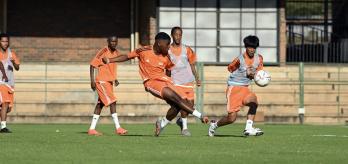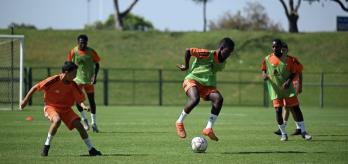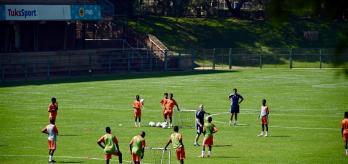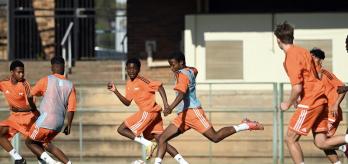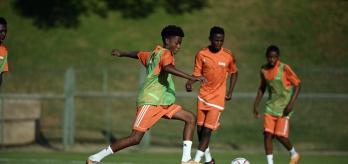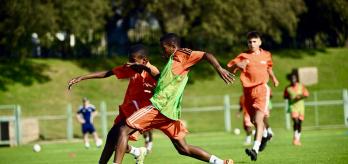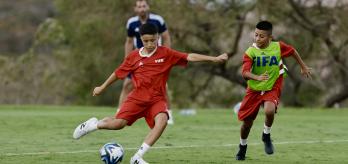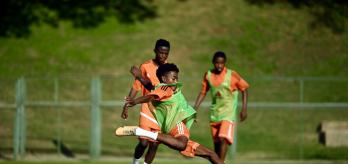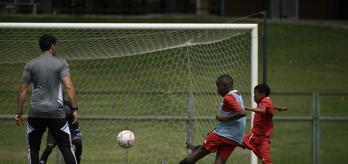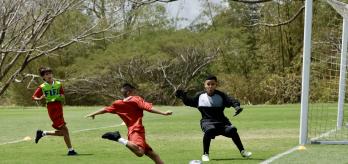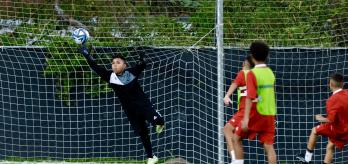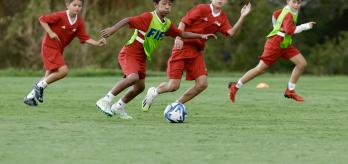Methodology
The intention: What is practised?
The objective of this small-sided game is to enhance players' abilities to overcome a direct opponent in a player-to-player marking setup. The exercise focuses on individual skills, such as out-thinking and outmuscling a direct defender. Players are tasked with getting tight to the opponent they are marking, denying them the space to turn or play forward. Effective tracking of opponents who drop to receive or make runs in behind is also a key aspect of the drill. Players in possession should be bold in taking on defenders to create attacking opportunities. They are encouraged to find ways to lose their marker and offer passing options to the player on the ball. Additionally, players should use unpredictable movements—such as overlapping runs or sudden directional changes—to deceive defenders and create space.
The scale: For whom is this relevant?
This small-sided game is centered on the individual player, with a focus on breaking down player-to-player marking during the build-up. It is especially relevant for players who frequently encounter this type of marking system, which aims to prevent the opposition from progressing the ball.The exercise primarily targets forwards and midfielders, who are often the key players in a player-to-player system. These players must be creative and find effective solutions to break free from their markers. One example is making well-timed runs to open up dribbling lanes for the player in possession, creating space and opportunities for progression.
The practice type: How is the practice designed?
The drill involves an opposed small-sided game that offers variable repetition, allowing players to practice overcoming direct marking through intelligent movement and dribbling skills.The reduced size of the playing area, combined with the fact that play is restarted by the goalkeepers, encourages players to find solutions for progressing the ball forward and finishing the attack efficiently. Goalkeepers are limited to three touches, and the ball can be passed back to them only once, which forces the in-possession team to be proactive and progressive rather than keeping possession for the sake of it. This should naturally result in 1v1 scenarios and limit the goalkeeper’s ability to create numerical advantages.
Session plan
Organisation
-
Mark out a 30m x 30m exercise area.
-
Position a full-size goal at either end of the exercise area.
-
Place a goalkeeper in each goal.
-
Split the group into 2 teams of 4.
Explanation
-
The exercise starts with one of the goalkeepers in possession.
-
The in-possession team try to score in the opposition’s goal.
-
The out-of-possession team adopt a player-to-player marking system and try to win the ball.
-
If the out-of-possession team gain possession, the teams swap roles immediately.
-
The goalkeepers are limited to 3 touches and cannot score.
-
Players can only play the ball to their goalkeeper once in each attack.
-
Each time a goal is scored, play restarts from the goalkeeper defending the goal of the team that just scored.
Key coaching points






























